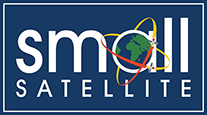Session
Session VIII: Advanced Technologies 2 - Research & Academia
Location
Salt Palace Convention Center, Salt Lake City, UT
Abstract
We present a developmental in-orbit demonstration of a TRL-9 UHF telecommand card, flown as a technology demonstrator payload on the fourth and final stage of the PSLV-C60/SPADEX Mission by ISRO. The card is an in-house developed RF PCB utilizing the ADF7030-1 transceiver from Analog Devices, marking the first flight of a new generation of sub-GHz modules with on-chip GFSK modulation and AX.25 packetization, widely used in CubeSat communications. Design and Implementation discussion of the UHF card is discussed, the design philosophy and various debugging techniques employed in the RF PCB development are discussed. The card integrates a digital SPI interface, Received Signal Strength Indicator (RSSI) monitoring, and Clear Channel Assessment (CCA) capabilities, enhancing adaptability in crowded UHF spectrum environments. The on-orbit performance of the UHF card is analyzed, including RSSI readings and clear channel assessment indicators observed during the mission. A future roadmap is proposed for implementing cognitive clear channel assessment before transmission, allowing for dynamic interference mitigation and enhanced spectrum efficiency. A unique ground station architecture is implemented, leveraging a Software-Defined Radio (SDR) for Doppler correction and an ADF7030-1 evaluation kit for signal decoding. This modular approach provides a flexible and portable solution for CubeSat operators. Additionally, an operational overview of the POEM platform is used, serving as a reference for new entrants in satellite communications. This work demonstrates the feasibility of using the ADF7030-1-based UHF Telecommand Card for CubeSat missions and validates its performance through a successful technology demonstration in space. The findings contribute to the advancement of scalable and intelligent CubeSat communication systems, offering insights for new developers on how to design UHF cards in-house and also assist future missions.
Document Type
Event
Flight Demonstration of a Next-Generation UHF Telecommand Card With Cognitive Clear Channel Assessment for CubeSat Missions
Salt Palace Convention Center, Salt Lake City, UT
We present a developmental in-orbit demonstration of a TRL-9 UHF telecommand card, flown as a technology demonstrator payload on the fourth and final stage of the PSLV-C60/SPADEX Mission by ISRO. The card is an in-house developed RF PCB utilizing the ADF7030-1 transceiver from Analog Devices, marking the first flight of a new generation of sub-GHz modules with on-chip GFSK modulation and AX.25 packetization, widely used in CubeSat communications. Design and Implementation discussion of the UHF card is discussed, the design philosophy and various debugging techniques employed in the RF PCB development are discussed. The card integrates a digital SPI interface, Received Signal Strength Indicator (RSSI) monitoring, and Clear Channel Assessment (CCA) capabilities, enhancing adaptability in crowded UHF spectrum environments. The on-orbit performance of the UHF card is analyzed, including RSSI readings and clear channel assessment indicators observed during the mission. A future roadmap is proposed for implementing cognitive clear channel assessment before transmission, allowing for dynamic interference mitigation and enhanced spectrum efficiency. A unique ground station architecture is implemented, leveraging a Software-Defined Radio (SDR) for Doppler correction and an ADF7030-1 evaluation kit for signal decoding. This modular approach provides a flexible and portable solution for CubeSat operators. Additionally, an operational overview of the POEM platform is used, serving as a reference for new entrants in satellite communications. This work demonstrates the feasibility of using the ADF7030-1-based UHF Telecommand Card for CubeSat missions and validates its performance through a successful technology demonstration in space. The findings contribute to the advancement of scalable and intelligent CubeSat communication systems, offering insights for new developers on how to design UHF cards in-house and also assist future missions.


